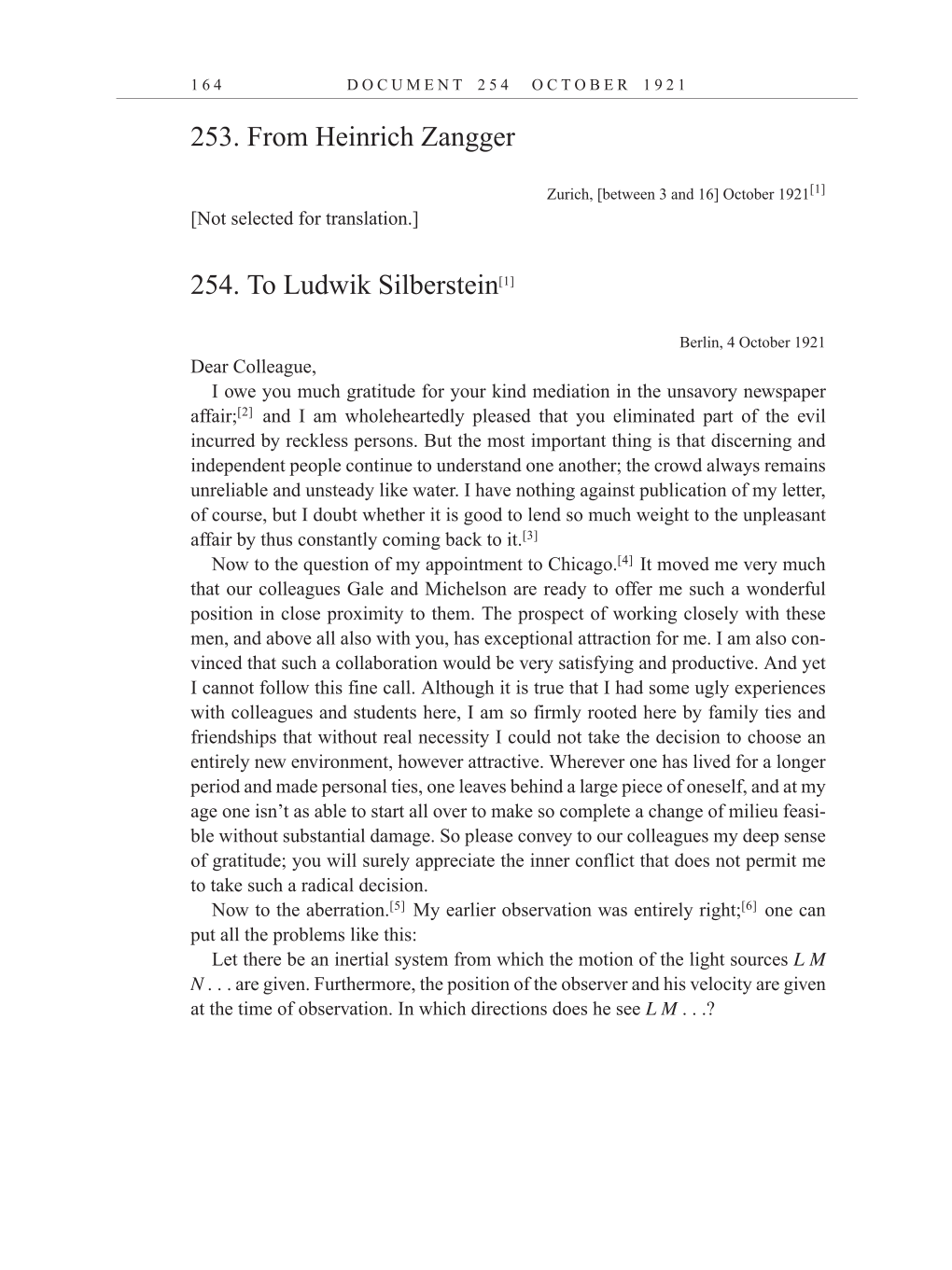1 6 4 D O C U M E N T 2 5 4 O C T O B E R 1 9 2 1
253. From Heinrich Zangger
Zurich, [between 3 and 16] October
1921[1]
[Not selected for translation.]
254. To Ludwik Silberstein[1]
Berlin, 4 October 1921
Dear Colleague,
I owe you much gratitude for your kind mediation in the unsavory newspaper
affair;[2]
and I am wholeheartedly pleased that you eliminated part of the evil
incurred by reckless persons. But the most important thing is that discerning and
independent people continue to understand one another; the crowd always remains
unreliable and unsteady like water. I have nothing against publication of my letter,
of course, but I doubt whether it is good to lend so much weight to the unpleasant
affair by thus constantly coming back to
it.[3]
Now to the question of my appointment to
Chicago.[4]
It moved me very much
that our colleagues Gale and Michelson are ready to offer me such a wonderful
position in close proximity to them. The prospect of working closely with these
men, and above all also with you, has exceptional attraction for me. I am also con-
vinced that such a collaboration would be very satisfying and productive. And yet
I cannot follow this fine call. Although it is true that I had some ugly experiences
with colleagues and students here, I am so firmly rooted here by family ties and
friendships that without real necessity I could not take the decision to choose an
entirely new environment, however attractive. Wherever one has lived for a longer
period and made personal ties, one leaves behind a large piece of oneself, and at my
age one isn’t as able to start all over to make so complete a change of milieu feasi-
ble without substantial damage. So please convey to our colleagues my deep sense
of gratitude; you will surely appreciate the inner conflict that does not permit me
to take such a radical decision.
Now to the
aberration.[5]
My earlier observation was entirely
right;[6]
one can
put all the problems like this:
Let there be an inertial system from which the motion of the light sources L M
N . . . are given. Furthermore, the position of the observer and his velocity are given
at the time of observation. In which directions does he see L M . . .?
